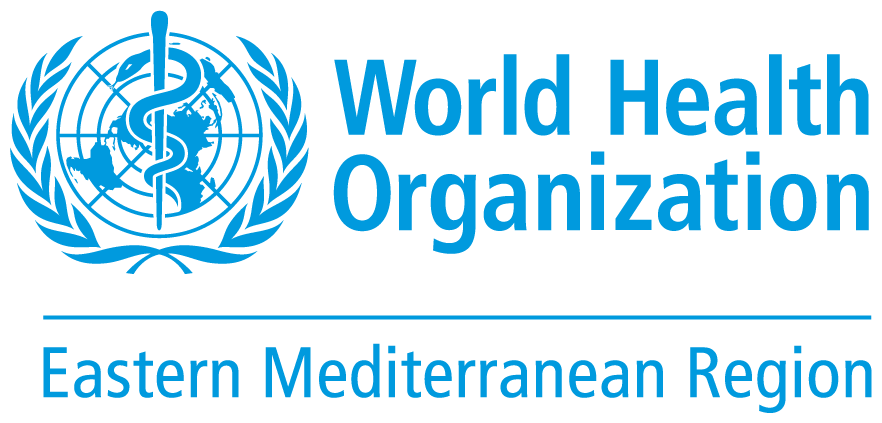PDF version
Editorial
Hanan Balkhy1
1Regional Director, WHO Regional Office for the Eastern Mediterranean, Cairo, Egypt.
Citation: Balkhy H. Gaza cannot wait any longer. East Mediterr Health J. 2024;30(4):253–254. https://doi.org/10.26719/2024.30.4.253.
Copyright: © Authors 2024; Licensee: World Health Organization. EMHJ is an open access journal. All papers published in EMHJ are available under the Creative Commons Attribution Non-Commercial ShareAlike 3.0 IGO licence (CC BY-NC-SA 3.0 IGO; https://creativecommons.org/licenses/by-nc-sa/3.0/igo).
The ongoing conflict in Gaza continues to take an unbearable toll, with tens of thousands of civilian deaths, skyrocketing food insecurity, ongoing disease outbreaks, and massive destruction of infrastructure (1). The impact on people’s lives is staggering, with over 35 000 people killed and 78 000 injured (2). Shockingly, 72% of those killed are women and children (3). Around 10 000 people are reported missing, many of whom are presumed dead under the rubble (4).
Since 7 October 2023, over 220 aid workers have been killed due to the hostilities, more than 3 times the number killed in any conflict in a single year (5). Tragically, WHO also lost one of its staff members. About 1.7 million people, nearly 75% of the population of Gaza, are displaced, 1.3 million of whom are estimated to be cramped in Rafah, where further Israeli military offensive has already caused renewed displacement of over 100 000 people, thus worsening the already catastrophic situation (6).
The conflict has led to major infrastructure damage, negatively impacting access to water and sanitation services, electricity, and food. The destruction of critical infrastructure, estimated at US$ 18.5 billion, exacerbates the suffering of the Palestinian people (7). Residential areas lay in ruins, with nearly two-thirds of all homes damaged or destroyed (8). The very fabric of life in Gaza is unravelling before our eyes.
The massively overcrowded shelters and camps, which are operating at about 4 times their capacity, pose a major risk of communicable disease outbreaks (9). For example, there has been more than a 23-fold increase, compared to 2022, in the monthly reported diarrheal cases among under-5 children (10). Outbreaks of diarrhoea and hepatitis A have already been declared (11).
The Integrated Food Security Phase Classification (IPC) reports a grave situation of food insecurity, with the entire population classified as “at crisis level (IPC Phase 3 or above)”; 1.1 million people are facing catastrophic lack of food (12). The IPC report indicates that Northern Gaza is likely to begin experiencing famine in May 2024 and the rest of the territory by July unless there is a dramatic change in the delivery of aid.
The healthcare system, which once provided impressive levels of care under challenging circumstances, has been decimated by the conflict. Only 12 of the 36 (33%) public hospitals remain partially or minimally functional (2), and only 27 of 89 (30%) primary care facilities are operational (2). The capacity of the health system to respond to current demands has been grossly degraded as healthcare needs continue to soar.
The attacks on healthcare are a gravely concerning feature of the conflict. The right to health is under attack. Since the start of the conflict, 445 attacks on healthcare have been recorded, resulting in over 723 fatalities (2,14). A further 447 attacks on healthcare have been documented in the West Bank, resulting in 12 deaths (13).
At the frontline of the response are courageous Palestinian health and humanitarian workers who continue to serve their communities under unimaginable conditions, despite the enduring unbearable losses, repeated displacements, and ongoing deprivation. Humanitarian agencies are facing multiple constraints in meeting the needs of the people of Gaza (6,9). Our collective efforts fall well short of what is required because of those limitations.
However, WHO has led multiple high-risk interagency missions to provide medicines and fuel to desperately depleted hospitals, evacuate patients, and to support health services through staff rotations (1). We are working flexibly with partners to expand and reactivate services wherever possible, to track and control infectious diseases, and advocate for the people of Gaza. Our coordination of emergency medical teams and health cluster partners is proving vital (9,14). And we are fully committed to staying the course and supporting the longer-term rehabilitation of the health system in Gaza.
Ultimately, the situation in Gaza is a political crisis requiring political solution. We continue to call for the release of all hostages, the protection of healthcare, an immediate cessation of hostilities, and a just and lasting peace. Humanitarian aid must be allowed to reach those in need without hindrance.
The people of Gaza cannot wait any longer because every day that passes without a peaceful resolution is a day of untold suffering for innocent civilians. The time for action is now. Gaza cannot wait!
References
- Al-Mandhari A, Peeperkorn R, Al-Shorbaji F, Akbar B, Kamil AM, Brennan R. Gaza disaster: we need a permanent ceasefire, now! East Mediterr East Mediterr Health J. 2023;29(12):919–920. https://doi.org/10.26719/2023.29.12.919.
- World Health Organization. oPt Emergency Situation Update. Issue 30, 7 Oct 2023–8 May 2024. https://www.emro.who.int/images/stories/Sitrep_-_issue_30.pdf.
- UNWomen. Silenced voices: Amani’s death in Gaza. Feature, 9 May 2024. https://www.unwomen.org/en/news-stories/feature-story/2024/05/silenced-voices-amanis-death-in-gaza.
- United Nations. 10,000 people feared buried under the rubble in Gaza. UN News, 2 May 2024. https://news.un.org/en/story/2024/05/1149256.
- United Nations. Press Statement on Humanitarian Workers and Threat of Famine in Gaza. Press Release, 11 April 2024. https://press.un.org/en/2024/sc15658.doc.htm#:~:text=These%20horrific%20attacks%20brought%20the,recorded%20in%20a%20single%20year.
- United Nations Office for the Coordination of Humanitarian Affairs. Hostilities in the Gaza Strip and Israel. Flash Update #164. https://www.ochaopt.org/content/hostilities-gaza-strip-and-israel-flash-update-164?_gl=1*j4mhev*_ga*NjU4ODM4MDI5LjE2ODA3ODExNTE.*_ga_E60ZNX2F68*MTcxNTQ5MTE2My42My4xLjE3MTU0OTE5NzYuNTIuMC4w.
- The World Bank. Joint World Bank, UN report assesses damage to Gaza’s infrastructure. Press Release, 2 April 2024. https://www.worldbank.org/en/news/press-release/2024/04/02/joint-world-bank-un-report-assesses-damage-to-gaza-s-infrastructure#:~:text=Joint%20World%20Bank%2C%20UN%20Report%20Assesses%20Damage%20to%20Gaza's%20Infrastructure,-Share%20more&text=WASHINGTON%2C%20April%202%2C%202024%20%E2%80%93,support%20of%20the%20European%20Union..
- European Union, World Bank, United Nations. Gaza Strip interim damage assessment. Summary Note, 29 March 2024. https://www.worldbank.org/en/news/press-release/2024/04/02/joint-world-bank-un-report-assesses-damage-to-gaza-s-infrastructure.
- United Nations Relief and Works Agency for Palestine Refugees. The situation in the Gaza Strip and the West Bank, including East Jerusalem. Situation Report #106, 29 April–5 May 2024. https://www.unrwa.org/sites/default/files/content/resources/unrwa_gaza_sitrep_106_7may_2024_eng_updated.pdf.
- Health Cluster. The Gaza Strip on the brink of a public health catastrophe: Health and WASH Clusters reassert calls for immediate long-lasting ceasefire. Geneva: Health Cluster, 2024. https://reliefweb.int/attachments/a4b1eefa-3717-4407-8101-bba6df81f488/Health%20%20WASH%20-%20Advocacy%20note%20on%20public%20health%20catastrophe%20-%20Final.pdf.
- UNICEF. Children’s lives threatened by rising malnutrition in the Gaza Strip. Press Release, 19 February 2024. https://www.unicef.org/press-releases/childrens-lives-threatened-rising-malnutrition-gaza-strip.
- Integrated Food Security Phase Classification. Gaza Strip: acute food insecurity situation for 15 February–15 March 2024 and projection for 16 March–15 July 2024. Rome: Integrated Food Security Phase Classification, 2024. https://www.ipcinfo.org/ipc-country-analysis/details-map/en/c/1156872/#:~:text=According%20to%20the%20most%20likely,IPC%20Phase%205%20(Catastrophe).
- World Health Organization. Surveillance system for attacks on health care. Geneva: World Health Organization, 2024. https://extranet.who.int/ssa/Index.aspx.
- Health Cluster, Occupied Palestinian Territory. 200 days of war. Geneva: Health Cluster. https://healthcluster.who.int/docs/librariesprovider16/meeting-reports/200-days-of-war-health-cluster-overview.pdf?sfvrsn=972bcec2_5&download=true.
PDF version
Editorial
Hanan Balkhy1
1Regional Director, WHO Regional Office for the Eastern Mediterranean, Cairo, Egypt.
Citation: Balkhy H. Gaza cannot wait any longer. East Mediterr Health J. 2024;30(4):253–254. https://doi.org/10.26719/2024.30.4.253.
Copyright: © Authors 2024; Licensee: World Health Organization. EMHJ is an open access journal. All papers published in EMHJ are available under the Creative Commons Attribution Non-Commercial ShareAlike 3.0 IGO licence (CC BY-NC-SA 3.0 IGO; https://creativecommons.org/licenses/by-nc-sa/3.0/igo).
The ongoing conflict in Gaza continues to take an unbearable toll, with tens of thousands of civilian deaths, skyrocketing food insecurity, ongoing disease outbreaks, and massive destruction of infrastructure (1). The impact on people’s lives is staggering, with over 35 000 people killed and 78 000 injured (2). Shockingly, 72% of those killed are women and children (3). Around 10 000 people are reported missing, many of whom are presumed dead under the rubble (4).
Since 7 October 2023, over 220 aid workers have been killed due to the hostilities, more than 3 times the number killed in any conflict in a single year (5). Tragically, WHO also lost one of its staff members. About 1.7 million people, nearly 75% of the population of Gaza, are displaced, 1.3 million of whom are estimated to be cramped in Rafah, where further Israeli military offensive has already caused renewed displacement of over 100 000 people, thus worsening the already catastrophic situation (6).
The conflict has led to major infrastructure damage, negatively impacting access to water and sanitation services, electricity, and food. The destruction of critical infrastructure, estimated at US$ 18.5 billion, exacerbates the suffering of the Palestinian people (7). Residential areas lay in ruins, with nearly two-thirds of all homes damaged or destroyed (8). The very fabric of life in Gaza is unravelling before our eyes.
The massively overcrowded shelters and camps, which are operating at about 4 times their capacity, pose a major risk of communicable disease outbreaks (9). For example, there has been more than a 23-fold increase, compared to 2022, in the monthly reported diarrheal cases among under-5 children (10). Outbreaks of diarrhoea and hepatitis A have already been declared (11).
The Integrated Food Security Phase Classification (IPC) reports a grave situation of food insecurity, with the entire population classified as “at crisis level (IPC Phase 3 or above)”; 1.1 million people are facing catastrophic lack of food (12). The IPC report indicates that Northern Gaza is likely to begin experiencing famine in May 2024 and the rest of the territory by July unless there is a dramatic change in the delivery of aid.
The healthcare system, which once provided impressive levels of care under challenging circumstances, has been decimated by the conflict. Only 12 of the 36 (33%) public hospitals remain partially or minimally functional (2), and only 27 of 89 (30%) primary care facilities are operational (2). The capacity of the health system to respond to current demands has been grossly degraded as healthcare needs continue to soar.
The attacks on healthcare are a gravely concerning feature of the conflict. The right to health is under attack. Since the start of the conflict, 445 attacks on healthcare have been recorded, resulting in over 723 fatalities (2,14). A further 447 attacks on healthcare have been documented in the West Bank, resulting in 12 deaths (13).
At the frontline of the response are courageous Palestinian health and humanitarian workers who continue to serve their communities under unimaginable conditions, despite the enduring unbearable losses, repeated displacements, and ongoing deprivation. Humanitarian agencies are facing multiple constraints in meeting the needs of the people of Gaza (6,9). Our collective efforts fall well short of what is required because of those limitations.
However, WHO has led multiple high-risk interagency missions to provide medicines and fuel to desperately depleted hospitals, evacuate patients, and to support health services through staff rotations (1). We are working flexibly with partners to expand and reactivate services wherever possible, to track and control infectious diseases, and advocate for the people of Gaza. Our coordination of emergency medical teams and health cluster partners is proving vital (9,14). And we are fully committed to staying the course and supporting the longer-term rehabilitation of the health system in Gaza.
Ultimately, the situation in Gaza is a political crisis requiring political solution. We continue to call for the release of all hostages, the protection of healthcare, an immediate cessation of hostilities, and a just and lasting peace. Humanitarian aid must be allowed to reach those in need without hindrance.
The people of Gaza cannot wait any longer because every day that passes without a peaceful resolution is a day of untold suffering for innocent civilians. The time for action is now. Gaza cannot wait!
References
- Al-Mandhari A, Peeperkorn R, Al-Shorbaji F, Akbar B, Kamil AM, Brennan R. Gaza disaster: we need a permanent ceasefire, now! East Mediterr East Mediterr Health J. 2023;29(12):919–920. https://doi.org/10.26719/2023.29.12.919.
- World Health Organization. oPt Emergency Situation Update. Issue 30, 7 Oct 2023–8 May 2024. https://www.emro.who.int/images/stories/Sitrep_-_issue_30.pdf.
- UNWomen. Silenced voices: Amani’s death in Gaza. Feature, 9 May 2024. https://www.unwomen.org/en/news-stories/feature-story/2024/05/silenced-voices-amanis-death-in-gaza.
- United Nations. 10,000 people feared buried under the rubble in Gaza. UN News, 2 May 2024. https://news.un.org/en/story/2024/05/1149256.
- United Nations. Press Statement on Humanitarian Workers and Threat of Famine in Gaza. Press Release, 11 April 2024. https://press.un.org/en/2024/sc15658.doc.htm#:~:text=These%20horrific%20attacks%20brought%20the,recorded%20in%20a%20single%20year.
- United Nations Office for the Coordination of Humanitarian Affairs. Hostilities in the Gaza Strip and Israel. Flash Update #164. https://www.ochaopt.org/content/hostilities-gaza-strip-and-israel-flash-update-164?_gl=1*j4mhev*_ga*NjU4ODM4MDI5LjE2ODA3ODExNTE.*_ga_E60ZNX2F68*MTcxNTQ5MTE2My42My4xLjE3MTU0OTE5NzYuNTIuMC4w.
- The World Bank. Joint World Bank, UN report assesses damage to Gaza’s infrastructure. Press Release, 2 April 2024. https://www.worldbank.org/en/news/press-release/2024/04/02/joint-world-bank-un-report-assesses-damage-to-gaza-s-infrastructure#:~:text=Joint%20World%20Bank%2C%20UN%20Report%20Assesses%20Damage%20to%20Gaza's%20Infrastructure,-Share%20more&text=WASHINGTON%2C%20April%202%2C%202024%20%E2%80%93,support%20of%20the%20European%20Union..
- European Union, World Bank, United Nations. Gaza Strip interim damage assessment. Summary Note, 29 March 2024. https://www.worldbank.org/en/news/press-release/2024/04/02/joint-world-bank-un-report-assesses-damage-to-gaza-s-infrastructure.
- United Nations Relief and Works Agency for Palestine Refugees. The situation in the Gaza Strip and the West Bank, including East Jerusalem. Situation Report #106, 29 April–5 May 2024. https://www.unrwa.org/sites/default/files/content/resources/unrwa_gaza_sitrep_106_7may_2024_eng_updated.pdf.
- Health Cluster. The Gaza Strip on the brink of a public health catastrophe: Health and WASH Clusters reassert calls for immediate long-lasting ceasefire. Geneva: Health Cluster, 2024. https://reliefweb.int/attachments/a4b1eefa-3717-4407-8101-bba6df81f488/Health%20%20WASH%20-%20Advocacy%20note%20on%20public%20health%20catastrophe%20-%20Final.pdf.
- UNICEF. Children’s lives threatened by rising malnutrition in the Gaza Strip. Press Release, 19 February 2024. https://www.unicef.org/press-releases/childrens-lives-threatened-rising-malnutrition-gaza-strip.
- Integrated Food Security Phase Classification. Gaza Strip: acute food insecurity situation for 15 February–15 March 2024 and projection for 16 March–15 July 2024. Rome: Integrated Food Security Phase Classification, 2024. https://www.ipcinfo.org/ipc-country-analysis/details-map/en/c/1156872/#:~:text=According%20to%20the%20most%20likely,IPC%20Phase%205%20(Catastrophe).
- World Health Organization. Surveillance system for attacks on health care. Geneva: World Health Organization, 2024. https://extranet.who.int/ssa/Index.aspx.
- Health Cluster, Occupied Palestinian Territory. 200 days of war. Geneva: Health Cluster. https://healthcluster.who.int/docs/librariesprovider16/meeting-reports/200-days-of-war-health-cluster-overview.pdf?sfvrsn=972bcec2_5&download=true.








